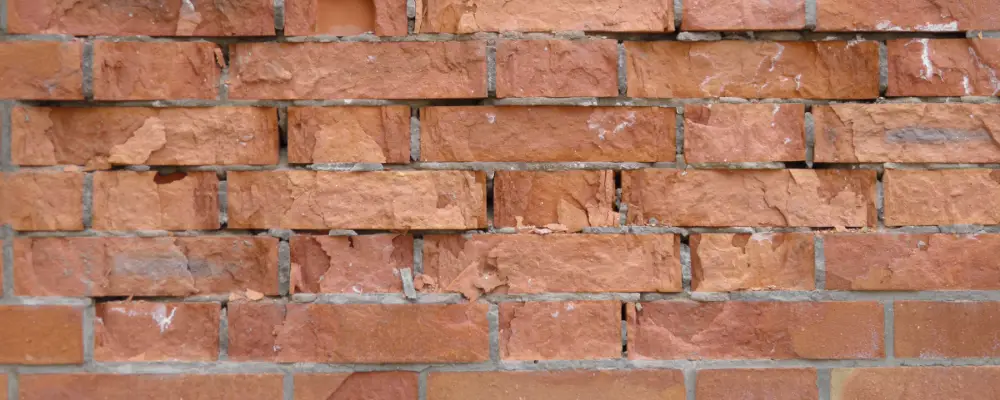One of the most popular brick masonry patterns followed in building walls is the Flemish bond. For each course, the headers and stretchers are placed alternatively. It is a common brick pattern that is profoundly established in Georgian architecture. This bond can be found in European architecture dating back to the Middle Ages.
When planning your brickwork, it’s essential to take this pattern work into account, as it can influence the overall look of the building. In this article, we will explore the applications, layout designs, advantages, and disadvantages of Flemish garden walls in detail.
What is a Flemish Garden Wall Bond?
Flemish bond is a type of traditional pattern of brick masonry where stretchers and headers are laid alternatively in a single course. Each alternate course starts with a quoin header at the corner. The quoin closer is placed to the right of the quoin header to encourage the face lap. The placement of the patterns supports each header centrally over the stretcher underneath it.
Importance of Flemish Garden Wall Bond
Flemish bond is not only used for decorating garden walls but it can be used for many historical buildings to enhance their aesthetic appearance and stand the test of time. The historical importance of the Flemish garden wall bond which makes it widely popular across the world is as follows:
| S.No | Features | Description |
| 1. | Historical Popularity in Europe | The Flemish bond was widely used across Northern and Central Europe during the late Middle Ages, showing its importance in medieval European architecture. |
| 2. | Introduction to England | The Flemish bond became highly valued in England starting in the 17th century, particularly for high-quality architecture, marking it as a preferred style among English architects of the period. |
| 3. | Status Symbol in Colonial America | In 18th-century colonial Virginia, the use of the Flemish bond indicated wealth, making it a symbol of status and sophistication in American colonial architecture. |
| 4. | Comeback in the 20th Century | During the early 20th century, the Flemish bond again became popular in the United States, particularly while doing restoration projects at Colonial Williamsburg, which emphasised historical accuracy. |
| 5. | Enduring Use in Historic and Modern Structures | Flemish bond continues to be a regular feature in both historic restorations and modern buildings, showcasing its timeless architectural appeal. |
How to Lay Out Flemish Garden Wall Bond
Three stretchers are attached to one header in each row of the Flemish Garden Wall Bond, sometimes referred to as the Sussex Bond. Ironically, garden walls were not frequently coated with this bond historically, but became popular later.
Throughout the course’s length, this alternates between one header and three, and occasionally even five, stretchers in succession. A header is set above the centre of each central stretcher, and a three-quarter bat is positioned next to the quoin header in each alternate course.
A Flemish garden wall pattern is constructed by laying alternate stretchers and headers in a single course. Special attention and good workmanship are required in laying Flemish garden wall bonds. It provides a charming and attractive appearance in every thickness of the walls. We found partly continuous vertical joints in this pattern. To break the vertical joints in successive courses, brickbats are inserted in alternative courses next to the quoin header.
Application for Flemish Garden Wall Bond
Garden Walls and Landscaping: Flemish Garden Wall Bond is widely used in garden walls because of its decorative appeal and structural durability, adding visual interest to outdoor spaces.
Property Boundaries and Dividers: This bond is often used to create property boundaries, adding elegance and a traditional look to fences and dividing walls.
Architectural Accents: Flemish Garden Wall Bond can be used as an accent or design feature within larger brick structures, adding contrast and depth to specific wall sections.
Restoration and Historical Projects: Due to its historical significance, the Flemish Bond is often selected for restoration projects and buildings with a traditional architectural style to maintain authenticity.
Advantages of Flemish Garden Wall Bond
- Under stress, the Flemish bond is especially strong and resilient.
- It produces an eye-catching and very attractive brick bond design.
- The wall is stabilised and strengthened by the mortar joints.
- When bricks are laid using the Flemish bond method, the wall becomes extremely sturdy and less likely to collapse.
- Additionally, the Flemish bond is quite lovely and gives any construction a refined look.
Disadvantages of Flemish Garden Wall Bond
- To prevent degradation and a bad appearance, the unsightly mortar joints need to be kept clean and in good condition.
- Finding a builder who is knowledgeable about Flemish bond brickwork may be more difficult because it is less frequently used than other types of brick bonding.
- Since the bricks have different sizes, there is less chance that two of them will end up being precisely the same size, which can typically pose problems when laying bricks.
Conclusion
Flemish garden wall bonding has a better appearance than other types but is not as strong as the English bond for load-bearing structures. Due to their weaker strength, they are used only for visual purposes and not to withstand very heavy loads.
FAQ’s
A Flemish garden wall bond is a masonry bond where each course is made up of three or four stretchers and one header, with the courses breaking joints in different ways.
The Flemish garden wall bond is widely used in decorative and non-load-bearing structures. Even though it is not as strong as the English bond it may be applicable for various purposes as follows:
Garden walls and landscaping
Property boundaries and dividers
Architectural accents
Restoration and historical projects

